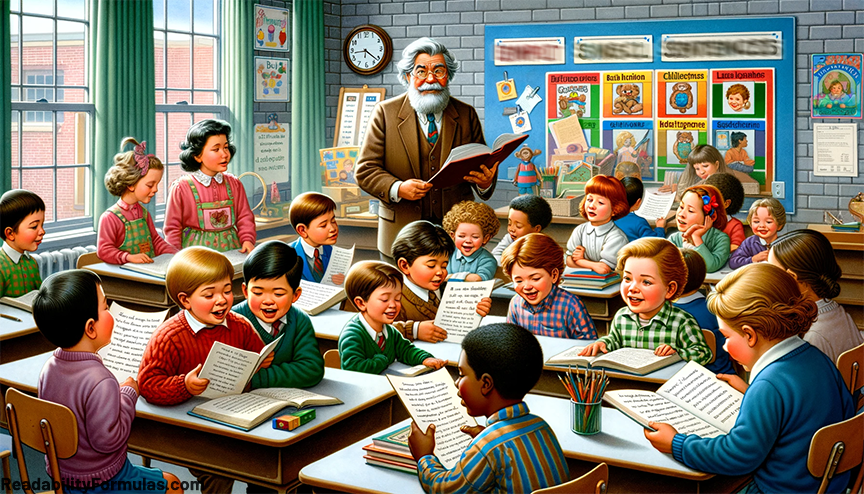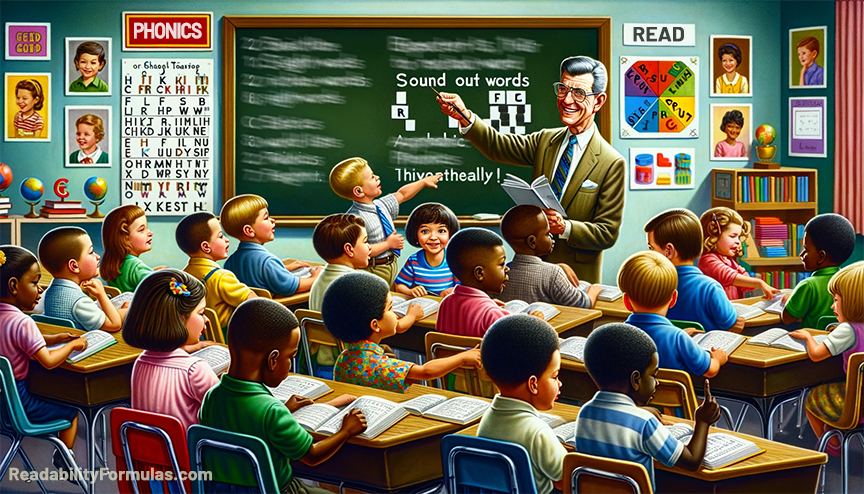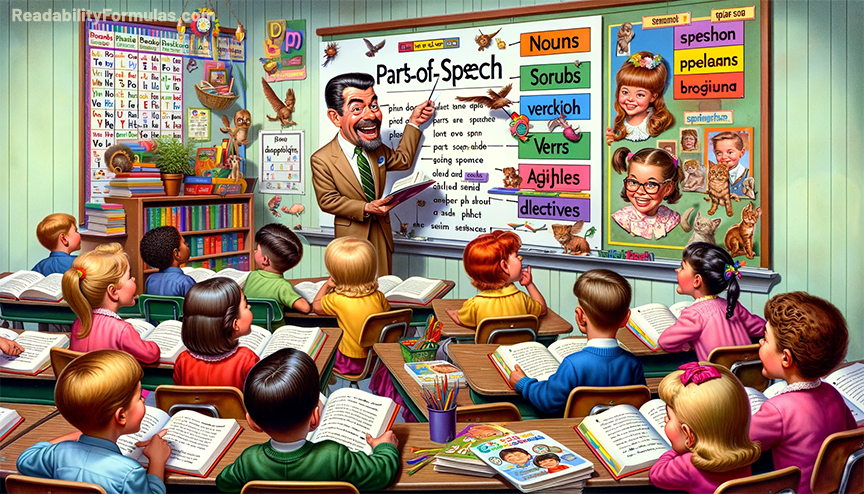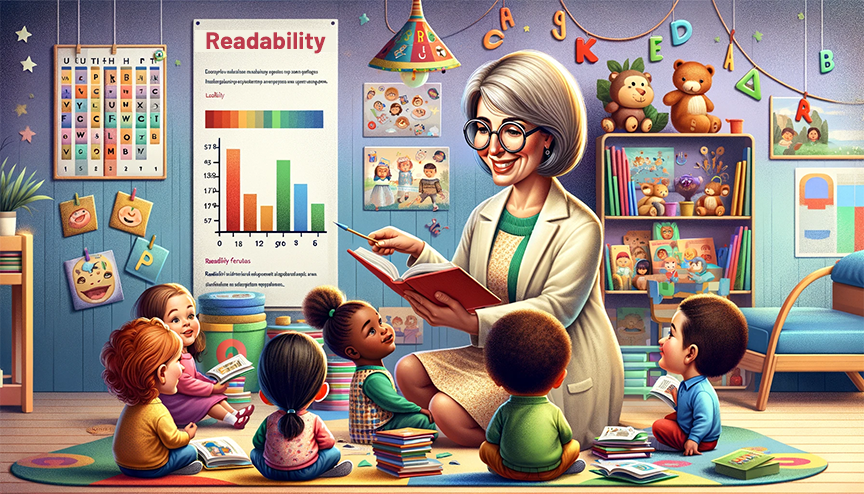 A 1st-grade reading level refers to the proficiency in reading expected of children who are in their first year of formal schooling, which occurs around ages 6-7 in many countries.
A 1st-grade reading level refers to the proficiency in reading expected of children who are in their first year of formal schooling, which occurs around ages 6-7 in many countries.
Here are common characteristics and skills related to a 1st-grade reading level:
- Phonics and Word Recognition: Children at this level work on understanding the relationships between letters and sounds, as well as blending these sounds to read simple words. They learn to recognize common consonant digraphs (such as “sh” or “th”) and vowel teams (like “ea” or “oa”).
- Sight Words: First-graders learn a list of common sight words, or words they should recognize instantly without having to sound them out (such as “the,” “is,” or “and”).
- Fluency: Students start to read simple sentences with some fluency, meaning they can read at a steady pace, with expression, and without too many pauses or stumbles.
- Comprehension: Understanding what they read is a key focus in 1st grade. This includes identifying the main topic, retelling key details, and asking and answering questions about a text.
- Vocabulary: First-graders learn the meanings of new words, often through context, illustrations, or direct explanation.
- Simple Texts: Texts include simple sentences with familiar words. The stories contain predictable text and supportive visuals to help them understand the content.
- Reading Aloud and Independently: Reading aloud to an adult or peer, as well as independent reading, are encouraged to develop and reinforce these skills.
- Writing Connection: Reading is often tied to writing in 1st grade. Teachers encourage students to write about what they read, which further supports comprehension and language skills.
- Parental Involvement: At this age, children benefit from reading at home with a parent or caregiver. This practice can reinforce what students learn at school and foster a love of reading.
The syntactic structure of texts for 1st graders is simple and straightforward.
SENTENCES
- Short Sentences (1-5 words): Around 40-50%, supporting ease of reading.
- Medium Sentences (6-10 words): Roughly 40-50%, introducing slightly more complex ideas.
- Long Sentences (11 or more words): About 5-10%, used sparingly to avoid overwhelming readers.
- Use of Negation: Around 5-10% of sentences might include simple negation, such as “not” or “no.”
- Use of Compound Sentences: Around 10-15% might be compound sentences, introducing the idea that two related thoughts can be connected.
SENTENCE TYPE
- Declarative Sentences: 60-70%, stating facts or opinions.
- Interrogative Sentences: 15-20%, asking questions to engage readers.
- Imperative Sentences: 10-15%, giving commands or requests.
- Exclamatory Sentences: 5-10%, expressing strong emotion or excitement.
AVERAGE WORD LENGTH
Word length in 1st-grade texts is aimed at beginner readers, reflecting the developmental stage of children.
- Short Words (1-3 letters): These may make up a significant portion of the text, perhaps around 40-50%, as they often include sight words and simple CVC (consonant-vowel-consonant) words like “cat,” “dog,” and “run.”
- Medium-Length Words (4-6 letters): Comprising around 30-40% of the text, these include more complex one-syllable words and many two-syllable words, such as “happy” and “rabbit.”
- Longer Words (7 or more letters): These are usually less common, making up around 10-20% of the text, and may consist of familiar multi-syllable words like “grandmother” or “elephant.”
PUNCTUATION
- Periods: Found at the end of nearly 100% of declarative and imperative sentences.
- Question Marks: Used in around 15-20% of sentences, marking interrogatives.
- Exclamation Points: Around 5-10% of sentences, denoting strong emotions.
- Commas: Approximately 10-20% of sentences, mainly in lists and compound sentences.
REPEAT WORDS vs. UNIQUE WORDS
In 1st-grade reading materials, words are skewed towards repetition.
Repeat Words: 60-70%. These comprise the majority of the text to reinforce decoding skills, sight word recognition, and fluency.
Unique Words: 30-40%. These introduce new vocabulary and concepts, enhancing language development and comprehension.
The blend of repeat and unique words is designed to foster both mastery of foundational words and exposure to new vocabulary. The repetitive structure helps solidify basic reading skills, while unique words encourage growth and curiosity.
VOCABULARY
Vocabulary is basic; it consists of commonly-used words. Teachers expect 1st graders to recognize sight words, in addition to sounding out words phonetically.
- Sight Words: Many curricula aim to teach 1st graders 150 to 250 sight words. Students are encouraged to recognize words on sight without sounding them out.
- Decodable Words: Students learn to decode (sound out) words using their knowledge of phonics. This might add several hundred more words to their reading vocabulary.
- Total Vocabulary Size: Estimates for a typical 1st grader’s reading vocabulary (including both sight words and decodable words) might range from 600 to 1,200 words or even more. This would depend on various factors such as the curriculum, individual differences in learning, teacher instruction, parental involvement, etc.
- Listening Vocabulary: A child’s listening vocabulary (words they understand when heard) is generally much larger than their reading vocabulary at this stage. They might understand several thousand words in spoken language, even if they can only read a fraction of those.
- Content-Specific Vocabulary: Some texts might introduce content-specific vocabulary, such as words related to a holiday or a particular subject like animals or family. Teachers introduce and explain these words in context, expanding the vocabulary.
SIMPLE TENSES
- Present Tense: 50-60%, describing current actions or states.
- Past Tense: 30-40%, recounting events that have already happened.
- Future Tense: 5-10%, talking about what will happen next.
DIALOGUE
- Around 10-20% of the text include dialogues, which can aid in understanding character interactions and feelings.
SYLLABLES
The following percentages highlight 1st-grade reading’s focus on phonetic decoding and sight word recognition. One-syllable words reinforce phonics skills, and multi-syllable words introduce children to word segmentation. The goal is to keep the text engaging and accessible for young readers, though these percentages may vary by text and educational method.
- One-Syllable Words: Making up roughly 70-80% of 1st-grade texts, these include simple words like “cat,” “dog,” “run,” and most sight words such as “the” and “is.”
- Two-Syllable Words: Comprising 15-25% of the words, these often contain simple syllables, with examples like “rabbit,” “happy,” and “sunset.”
- Three or More Syllable Words: Less than 5% of words may fall into this category, including familiar words like “grandmother” or “elephant,” often supported by context.
PARAGRAPHS
Paragraph length is kept short and manageable to develop reading skills of young learners.
- Short Paragraphs (1-3 sentences): 50-60% of the text to add concise thoughts or ideas, making it easier for young readers to absorb and comprehend the content.
- Medium Paragraphs (4-6 sentences): Around 30-40% of the text to add slightly more detail or develop a simple storyline.
- Long Paragraphs (7 or more sentences): Used sparingly (5-10% of text) for more descriptive passages or to convey complex ideas.
Using short paragraphs helps young readers feel a sense of accomplishment and maintain engagement, without becoming overwhelmed.
PARTS OF SPEECH
In 1st-grade texts, parts of speech reflects a simplified and accessible language structure. Here’s a general breakdown:
- Nouns (25-30%): Common and proper nouns are used to identify objects, people, places, and ideas, including basic words like “cat,” “dog,” or “school.”
- Verbs (20-25%): Simple action words in present, past, and future tenses, such as “run,” “jumped,” or “will go,” help convey action and movement.
- Adjectives (10-15%): Basic descriptive words like “big,” “red,” or “happy” add detail to the nouns, making the text more vivid.
- Pronouns (10-15%): Words like “he,” “she,” “it,” or “they” replace nouns and are used frequently to avoid repetition.
- Adverbs (5-10%): Simpler adverbs modifying verbs, adjectives, or other adverbs, such as “quickly” or “very,” are used, but not as commonly as other parts of speech.
- Prepositions (5-10%): Basic prepositions like “in,” “on,” or “under” introduce spatial or temporal relations.
- Conjunctions (5-8%): Simple conjunctions like “and,” “but,” “or” connect words, phrases, or clauses.
- Interjections (1-2%): These are used sparingly, mostly in dialogues, and include words like “oh,” “wow,” or “oops.”
Clear, simple sentences introduce young readers to fundamental grammar concepts.
PASSIVE VS. ACTIVE VOICE
In 1st-grade reading materials, the emphasis is on clear language—this often leads to active voice.
- Active Voice (80-90%): This voice is used more as it is direct and easier to understand. In active sentences, the subject performs the action, like “The cat chased the mouse.”
- Passive Voice (10-20%): Passive construction, where the subject receives the action, such as “The mouse was chased by the cat,” is less common. Texts might introduce it sparingly to vary sentence structure or convey specific meanings.
Educators and authors strive to make language accessible; they focus on sentence structures that align with children’s developmental stages. While they might use passive voice, they do so in a controlled and deliberate manner, with the bulk of the text written in active voice.
MISC. SYNTACTIC STATS IN 1ST GRADE READING MATERIALS
- Homophones and Homographs: Around 5-10%, introducing students to words that sound alike or look alike but have different meanings.
- Use of Contractions: 10-15%, teaching students common contractions like “isn’t,” “don’t,” etc.
- Content Themes: Subjects like family, animals, daily life, and nature are prevalent, reflecting relatable and engaging themes for young readers.
- Use of Onomatopoeia: Around 5-8%, using sound words like “buzz” or “crash” to make reading more lively and engaging.
- Inclusion of Cultural Diversity: A growing trend in educational materials is using diverse characters and settings to reflect different experiences and backgrounds.
- In-text Definitions or Glossaries: Some texts might include definitions or a glossary for new or challenging words, accounting for about 5-10% of books.
Readability Formulas for Preschool Readers
Spache Calculator: a tool used to score the readability of texts aimed at elementary school readers. It outputs a score using average sentence length and percentage of difficult words.
Dale-Chall Calculator: Unlike Spache which is tailored for younger readers, the Dale-Chall formula is suitable for a wider range of age groups, including adults. It focuses on word familiarity—a strong indicator of text difficulty.
Fry Sight Words Tool: use this tool to assess which readers will understand your text and at which grade level students will likely know specific words in your text.
Fry Graph Calculator: A popular readability metric for children’s texts. It analyzes sentence length and syllable count. Texts appropriate for 1st graders will fall into the 1st to 2nd-grade band on the Fry Graph.
Lexile Level: Another common measure used to match children with grade-level texts is the Lexile measure. Texts for 1st graders range from 190L to 530L.
These statistics aim to capture the varied and dynamic nature of 1st-grade reading materials. They are tailored to support children’s reading development, comprehension, and enjoyment.










